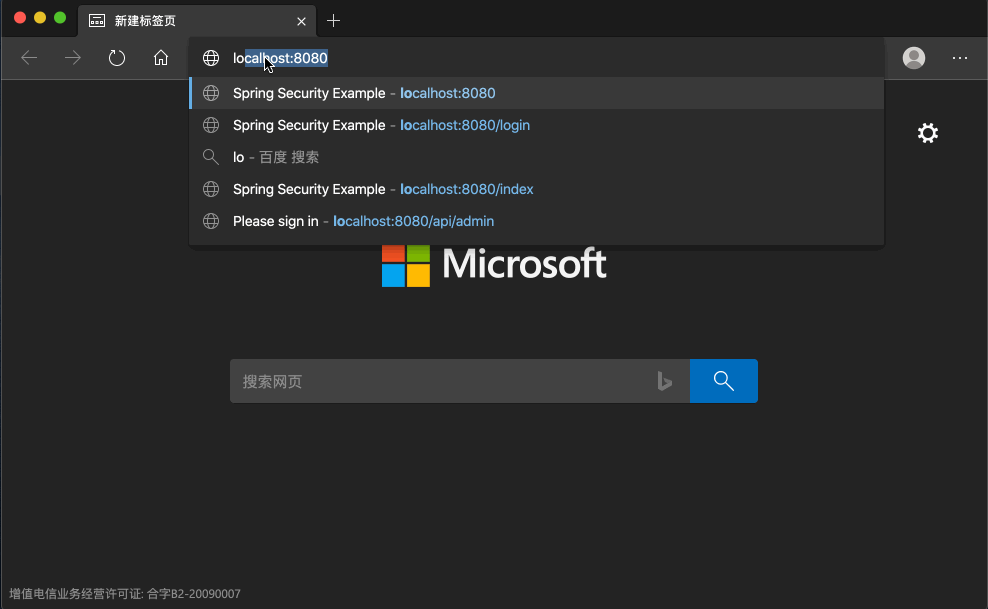在前面的篇幅中,我们对认证和授权流程大致梳理了一遍。在这个过程中我们一直都是使用系统生成的默认页面,登录成功后也是直接调转到根路径页面。而在实际的开发过程中,我们是需要自定义登录页面的,有时还会添加各类验证机制,在登录成功后会跳转至指定页面,还会进行各种美化,甚至是前后端分离的方式。这时,就需要我们对自定义登录进行实现。
本章节使用spring-security-custom-login
一、工程准备
1、pom.xml
<?xml version="1.0" encoding="UTF-8"?>
<project xmlns="http://maven.apache.org/POM/4.0.0"
xmlns:xsi="http://www.w3.org/2001/XMLSchema-instance"
xsi:schemaLocation="http://maven.apache.org/POM/4.0.0 http://maven.apache.org/xsd/maven-4.0.0.xsd">
<parent>
<artifactId>security-study</artifactId>
<groupId>cn.wujiwen.security</groupId>
<version>0.0.1-SNAPSHOT</version>
</parent>
<modelVersion>4.0.0</modelVersion>
<description>自定义登录页面</description>
<artifactId>spring-security-custom-login</artifactId>
<dependencies>
<dependency>
<groupId>org.springframework.boot</groupId>
<artifactId>spring-boot-starter-security</artifactId>
</dependency>
<dependency>
<groupId>org.springframework.boot</groupId>
<artifactId>spring-boot-starter-web</artifactId>
</dependency>
<dependency>
<groupId>org.springframework.boot</groupId>
<artifactId>spring-boot-starter-thymeleaf</artifactId>
</dependency>
</dependencies>
</project>
我们引入了thymeleaf,也是官方推荐的做法。
2、application.yml
server:
port: 8080
spring:
security:
user:
name: admin
password: admin
roles: ADMIN
非常的熟悉,端口、基础用户等信息
3、启动类Application
@SpringBootApplication
public class SecurityLoginApplication {
public static void main(String[] args) {
SpringApplication.run(SecurityLoginApplication.class,args);
}
}
二、自定义SecurityConfig
自定义SecurityConfig需继承WebSecurityConfigurerAdapter并重写相关配置即可,由于今天只涉及到自定义页面的信息,所以我们只需要重写configure(HttpSecurity http) 方法即可。在重写这个方法前,我们先来看一下原来这个方法是干什么的。
protected void configure(HttpSecurity http) throws Exception {
http
// 1 声明ExpressionUrlAuthorizationConfigurer,要求所有URL必须登录认证后才能访问
.authorizeRequests().anyRequest().authenticated()
.and()
// 2 声明一个默认的FormLoginConfigurer
.formLogin()
.and()
// 3 声明一个默认的HttpBasicConfigurer
.httpBasic();
}
- 对任何请求要求用户已认证(通俗地讲,用户必须先登录才能访问任何资源);
- 启用用户名密码表单登录认证机制;
- 启用
Http Basic认证机制;
下面我们就通过重写上述的方法来做到自定义登录页面等信息
@EnableWebSecurity
public class SecurityConfig extends WebSecurityConfigurerAdapter {
@Override
protected void configure(HttpSecurity http) throws Exception {
http.csrf().disable();
http.authorizeRequests().anyRequest().authenticated()
.and().httpBasic().and()
// 1
.formLogin().loginPage("/login")
// 2
.loginProcessingUrl("/loginAction")
// 3
.defaultSuccessUrl("/index")
.permitAll();
}
}
我们发现其实和缺省方法中并没有太大的差别,只有三处的变化
loginPage()中将指定自定义登录页面的请求路径loginProcessingUrl()为认证的请求接口,也就是我们常说的form表单中的action。如果不指定,将采用loginPage中的值。defaultSuccessUrl()为认证成功后跳转的页面地址
三、自定义页面
在springboot中使用html页面这里就不过多赘述,一般情况下在resource下新建templates文件下,将需要的页面放到该文件下即可。我的路径为
_resource
|_templates
|_login.html
|_index.html
1、login.thml
<!DOCTYPE html>
<html xmlns="http://www.w3.org/1999/xhtml" xmlns:th="http://www.thymeleaf.org"
xmlns:sec="http://www.thymeleaf.org/thymeleaf-extras-springsecurity3">
<head>
<title>Spring Security Example </title>
</head>
<body>
<div th:if="${param.error}">
用户名或密码错误
</div>
<div th:if="${param.logout}">
你已经退出
</div>
<form th:action="@{/loginAction}" method="post">
<div><label> 账号 : <input type="text" name="username"/> </label></div>
<div><label> 密码 : <input type="password" name="password"/> </label></div>
<div><input type="submit" value="登录"/></div>
</form>
</body>
</html>
这里我将action与loginProcessingUrl()对应,你也可以自己尝试更换或使用默认或与loginPage()一致的。
到这里我们就完成了一个最简单的表单提交的页面了。当我们点击submit按钮时,正确的请求路径将是
curl -x POST -d "username=admin&password=admin" http://127.0.0.1:8080/loginAction
这里可能会有个疑问了,为啥你的参数就是username和password呢?嗯~ 当然可以自己指定的啊,因为在FormLoginConfigurer中默认的指定参数
public FormLoginConfigurer() {
super(new UsernamePasswordAuthenticationFilter(), null);
usernameParameter("username");
passwordParameter("password");
}
2、index.html
<!DOCTYPE html>
<html xmlns="http://www.w3.org/1999/xhtml" xmlns:th="http://www.thymeleaf.org"
xmlns:sec="http://www.thymeleaf.org/thymeleaf-extras-springsecurity3">
<head>
<title>Spring Security Example</title>
</head>
<body>
<h2>Welcome <b th:text="${username}"></b></h2>
</body>
</html>
这是个认证成功后的欢迎页面,比较简单,显示当前登录用户即可
四、BaseContoller
上面我们定义了各类路径和请求地址,接下来我们需要定义如果将这些页面映射出来
@Controller
public class BaseController {
// loginPage("/login") 将跳转到login.html
@GetMapping("/login")
public String login() {
return "login";
}
// index.html
@RequestMapping("/index")
public String index(Model model, HttpServletRequest request) {
model.addAttribute("username",request.getUserPrincipal().getName());
return "index";
}
}
五、测试

到这里我们已经完成了一个简单的自定义登录页面的改造了。当然,在实际的项目中需要自定义的东西还有很多很多,比如,当认证不通过时如果操作,当用户退出登录时如果操作,这些都没有去实现。
还有人会说,这都什么年代了,前后端分离啊,这些都可以通过一步步的改造来实现的。
(完)